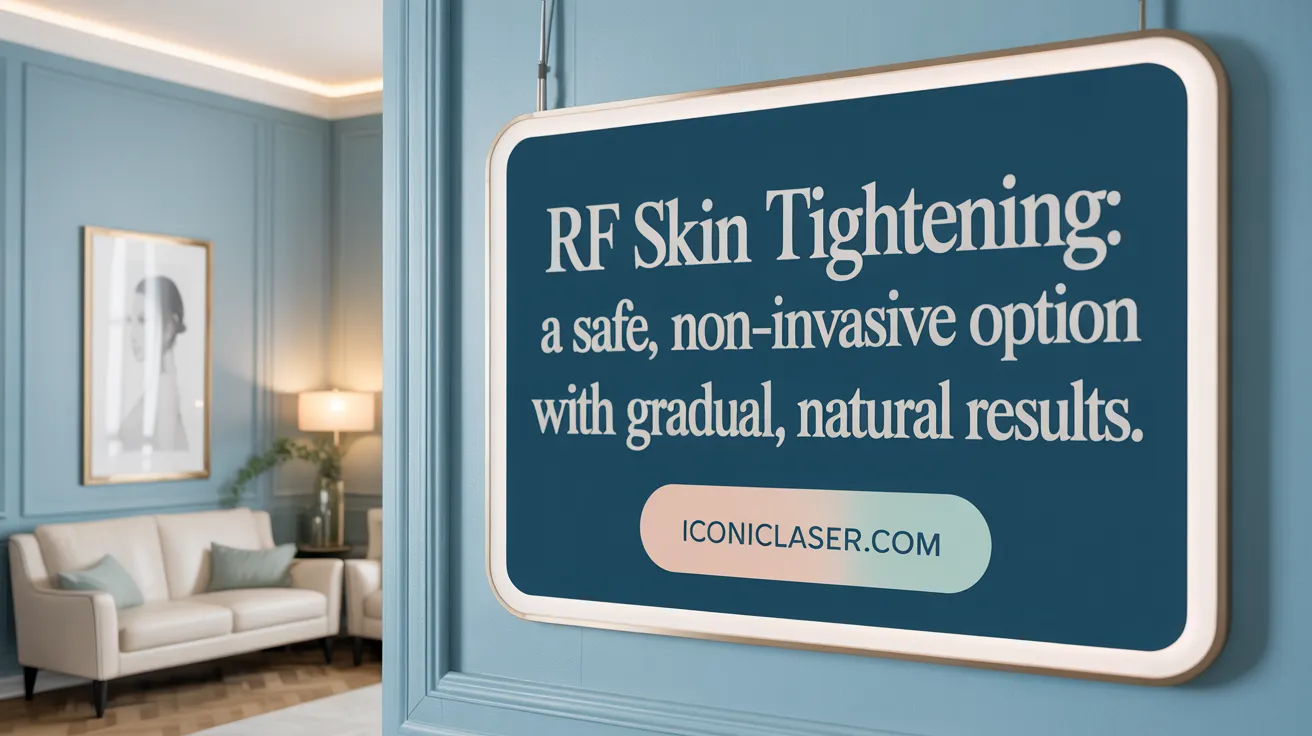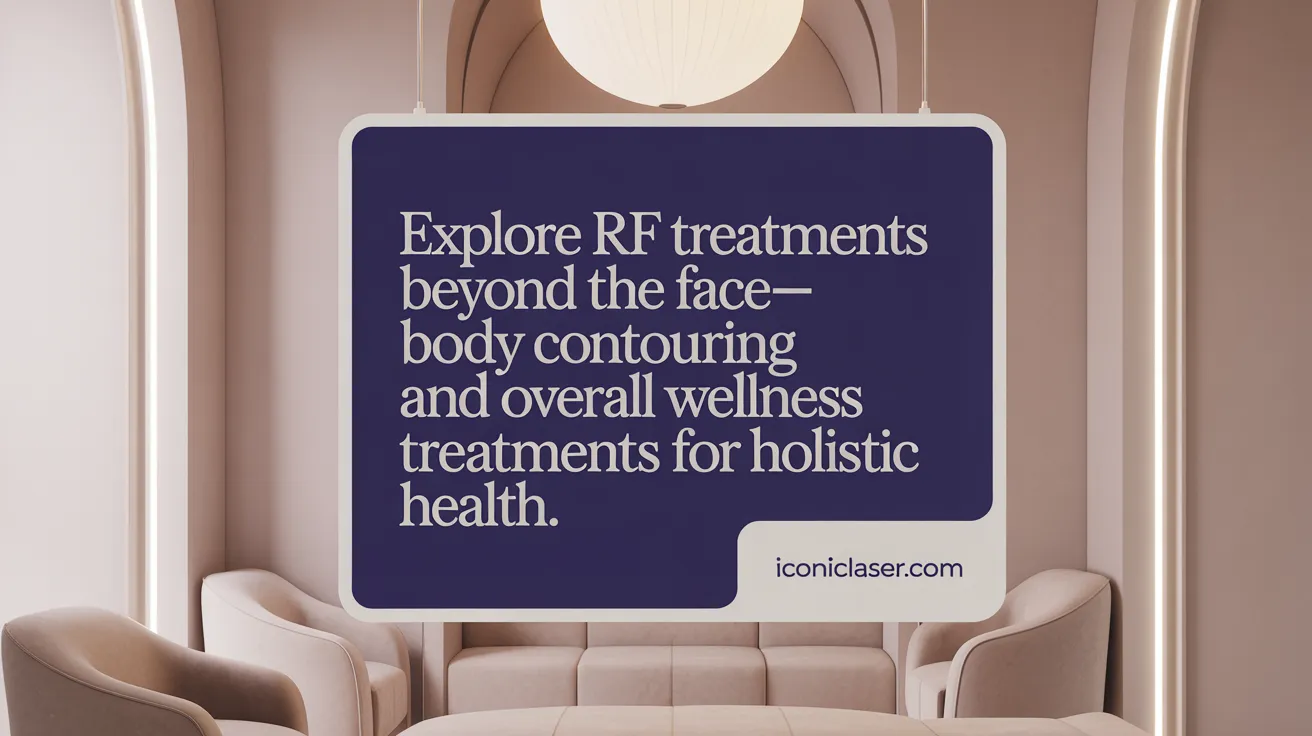Introduction: Understanding RF Skin Tightening as a Modern Skincare Solution
The Technology Behind RF Skin Tightening
Radiofrequency (RF) skin tightening is a non-invasive cosmetic procedure that utilizes radio waves to stimulate collagen and elastin production in the skin. These electromagnetic waves gently heat the deeper layers of the skin, accelerating natural tissue repair and promoting firmer, more youthful skin.
Benefits of a Non-Invasive Approach
Unlike surgical facelifts, RF treatments require no incisions or anesthesia, minimizing recovery time and reducing risks. Typically lasting between 30 to 90 minutes, the procedure allows patients to quickly return to their daily routines, often with minimal redness or swelling that resolves swiftly.
Promoting Skin Rejuvenation and Tightening
The controlled heating effect creates micro-injuries in the dermis, triggering the body’s healing response and enhancing collagen production over time. This process gradually tightens sagging skin, improves skin texture, and diminishes wrinkles, leading to visible results that develop over several months. RF skin tightening is versatile, effective on multiple areas including the face, neck, and body, and is FDA-approved for wrinkle reduction.
This modern aesthetic solution offers a safe, gradual, and natural-looking method to rejuvenate skin without the complications of surgery, making it a popular choice for those seeking non-invasive skincare enhancements.
How Radiofrequency Skin Tightening Works and Its Dermatological Benefits

Is radiofrequency skin tightening safe and how does it work?
Radiofrequency (RF) skin tightening is a non-invasive cosmetic treatment that uses electromagnetic waves to generate heat deep within the skin layers. This heat stimulates the production of collagen and elastin—key proteins responsible for skin's firmness and elasticity. Additionally, RF treatment promotes the generation of new skin cells, resulting in a smoother, more youthful appearance.
This procedure is FDA-approved specifically for reducing the appearance of wrinkles, underscoring its safety and effectiveness when performed by qualified professionals. The treatment typically lasts between 30 to 90 minutes and is minimally uncomfortable, involving a warming sensation rather than pain. Patients usually experience only mild redness or tingling afterward, which resolves quickly.
Treatment Duration and What to Expect During the Procedure
The RF session requires about an hour and is conducted in a medical setting by dermatologists, plastic surgeons, or licensed aestheticians. During the procedure, the device emits controlled radiofrequency waves that heat the skin to just above 115°F (46°C), activating heat-shock proteins that encourage collagen synthesis.
Most patients can resume their daily activities immediately post-treatment, with some even able to apply makeup the same day. The low downtime and non-invasive nature make RF skin tightening an appealing alternative to surgical procedures like facelifts.
Immediate and Long-Term Results Timeline
Visible improvement in skin tightness and texture can often be noticed immediately after treatment, thanks to initial skin contraction. However, the full benefits develop gradually over two to six months as collagen and elastin continue to rebuild.
With proper post-treatment skin care after RF, including sunscreen use, these results typically last from one to three years. For sustained effects, some patients opt for maintenance sessions.
RF skin tightening offers a safer, natural-looking alternative for individuals seeking to reduce wrinkles and sagging skin without surgery or significant downtime.
Suitability of RF Skin Tightening for Different Skin Concerns and Areas
What skin concerns can RF skin tightening address?
Radiofrequency (RF) skin tightening is a versatile and non-invasive treatment that targets a variety of skin concerns. It effectively reduces wrinkles, firms sagging skin, and improves uneven texture and dull skin tone. Additionally, it can help diminish the appearance of acne scars by stimulating collagen and elastin production, resulting in a smoother and more youthful complexion.
Which areas of the body can be treated with RF?
RF treatments are not limited to the face and neck. They are commonly used on the arms, hands, and other body parts for contouring and toning. One notable application is vaginal rejuvenation RF treatment, demonstrating the wide range of areas that can benefit from this technology.
Is RF skin tightening suitable for all skin types and tones?
Yes, RF skin tightening is generally safe and effective for all skin types and tones. Unlike some laser treatments that carry risks for darker skin, RF uses low-dose radiofrequency energy that minimally affects melanin, reducing the risk of pigmentation issues.
How does RF compare to surgical options?
While RF skin tightening offers gradual, natural-looking improvements with minimal downtime and low risk, it does not achieve the dramatic or permanent results of surgical facelifts. Surgical options remain more invasive and carry higher risk but typically provide longer-lasting and more significant skin tightening. RF serves as a safe alternative for those seeking subtle rejuvenation without surgery.
Overall, RF skin tightening is a flexible, minimally invasive option suitable for addressing several common skin concerns across multiple body areas, catering to diverse skin types and needs. For details on post-treatment skin care after RF and the duration of RF treatment effects, comprehensive resources are available to help patients understand expectations and maintenance.
Comparing RF Skin Tightening to Other Advanced Dermatological Treatments

What advanced dermatological treatments does a premium medical aesthetic clinic offer?
Premium medical aesthetic clinics typically provide a wide range of advanced skin rejuvenation treatments. These include laser skin resurfacing, which targets surface skin damage; chemical peels using agents like Jessner, TCA, and VI Peel for exfoliation and renewal; microneedling to stimulate collagen through controlled skin injury; and microdermabrasion or dermaplaning for superficial skin smoothing. Additionally, clinics offer injectable treatments such as dermal fillers and neuromodulators like Botox to address volume loss and dynamic wrinkles.
How does RF complement other treatments like chemical peels, microneedling, and injectables?
Radiofrequency (RF) skin tightening complements these therapies by providing a non-invasive way to stimulate collagen and elastin deeper within the dermis without disrupting the skin's surface. While chemical peels and microneedling focus on superficial exfoliation and controlled skin injury, RF enhances skin firmness and elasticity through heat-induced collagen remodeling. Injectables tackle volume and muscle activity, whereas RF improves overall skin texture and tightness, making it an excellent adjunct to a comprehensive rejuvenation plan.
When is RF preferred over surgical procedures for facial enhancement or body contouring?
RF treatments are often preferred by patients seeking gradual, natural-looking skin tightening without surgery, incisions, or downtime. It is ideal for individuals with mild to moderate skin laxity on the face, neck, or body who want minimal discomfort and quick recovery. Compared to surgical facelifts or liposuction, RF offers a less invasive alternative with reduced risk and shorter recovery, making it suitable for maintenance or early intervention in aging skin.
How is RF integrated within a comprehensive aesthetic clinic offering?
Clinics such as those in Troy, Michigan, integrate RF skin tightening alongside chemical peels, microneedling, laser therapies, and injectables to provide personalized treatment plans. These plans may combine modalities to target multiple skin concerns simultaneously, for example, pairing RF with a chemical peel to improve both deep collagen support and surface texture. Integrating RF within such a multidisciplinary approach maximizes treatment outcomes and caters to patient-specific cosmetic goals.
Practical Considerations: Treatment Procedure, Risks, Costs, and Recovery

Typical session length and number of treatments needed
Radiofrequency (RF) skin tightening sessions usually last between 30 and 90 minutes. Most patients require only one treatment to observe the full effects, which gradually improve over a period of up to six months (see duration of RF treatment effects).
Minimal downtime and quick recovery post-procedure
Patients can expect minimal downtime after the procedure. Recovery is quick, with most individuals able to resume their daily activities immediately, including applying makeup if desired. Redness or tingling may occur but typically resolves within 24 hours. Learn more about the safety and recovery from RF treatment.
Common minor side effects and rare complications
Common side effects include mild redness, swelling, or temporary skin tingling. Serious complications like burns are rare and mostly associated with treatments performed by unqualified providers. Using FDA-approved radiofrequency devices under experienced care mitigates most risks.
Cost considerations and comparison to at-home devices and surgical options
Professional RF treatments cost approximately $2,000 per session. These treatments offer more powerful and controlled results compared to at-home RF devices, which are less expensive (ranging from $150 to over $700) but also less effective. Compared to surgical options, RF skin tightening is less invasive, safer, and involves shorter recovery times, making it an attractive alternative for patients seeking gradual, natural-looking skin tightening. For more information on this, see RF as an alternative to surgical facelifts.
Women’s Wellness and Body Contouring: Expanding RF Skin Tightening Applications

How Is RF Skin Tightening Used for Body Contouring and Vaginal Rejuvenation?
Radiofrequency (RF) skin tightening extends beyond facial treatments to address body sculpting with radiofrequency and vaginal rejuvenation RF treatment. This non-invasive procedure uses electromagnetic energy to generate heat, stimulating collagen and elastin stimulation which firms and lifts the skin. It is commonly applied to areas like the arms, abdomen, and thighs to reduce sagging and improve shape.
RF technology also plays a significant role in RF-based treatments for vaginal rejuvenation, offering women a non-surgical option for enhancing tissue tone and elasticity in intimate areas. This application helps improve comfort and wellness without the downtime associated with invasive surgery.
What Women's Wellness Services Are Commonly Provided in Medical Aesthetic Clinics?
Medical aesthetic clinics often integrate comprehensive women’s wellness services that complement RF skin tightening. These include hormone therapy and pelvic floor therapy alongside RF-based treatments for vaginal rejuvenation. Such multidisciplinary care supports overall feminine health and aesthetic goals.
Why Are Non-Invasive Alternatives Like RF Important for Women’s Wellness?
RF skin tightening serves as a safer alternative to surgical interventions, enabling women to refine body contours and intimate health with minimal discomfort and downtime. Its gradual and natural-looking results align with patient preferences for minimally invasive procedures.
What Complementary Technologies Are Used Alongside RF for Body Sculpting?
Clinics frequently combine RF treatments with other non-invasive body contouring technologies, such as mechanical massage devices (e.g., Endermologie Treatments Troy and Velashape III Body Contouring) to enhance fat reduction and skin texture. These complementary methods provide holistic solutions tailored to individual wellness and aesthetic needs, maximizing outcomes through integrated care.
Selecting the Right Provider and Post-Treatment Care for Optimal RF Results

How can patients ensure the safety and effectiveness of RF skin tightening?
Ensuring safety and effectiveness in radiofrequency (RF) skin tightening starts with choosing the right provider. Patients should seek treatment from certified dermatologists, plastic surgeons, or licensed aestheticians who are experienced with RF treatment procedure. It is crucial that the clinic uses FDA-approved RF devices, as these minimize risks such as burns, redness, or uneven skin tightening.
Professional consultation is key to assessing individual suitability, choosing appropriate treatment areas for RF skin tightening, and customizing plans for best outcomes. Qualified practitioners also guide patients on necessary post-treatment skin care.
Proper post-treatment skin care plays an important role in sustaining results. Diligent use of sunscreen protects healing skin from sun damage and pigmentation changes. Maintenance treatments recommended by the provider can extend the effects, which typically last between one and three years, consistent with the duration of RF treatment effects.
While at-home RF devices are available, they are less powerful and generally provide modest improvements compared to professional treatments. Their use should be approached cautiously, ideally after professional evaluation, to avoid risks and ensure realistic expectations.
By combining expert provider selection with careful post-care adherence, patients can safely enjoy the skin firming and rejuvenation benefits of RF technology.
